Debit vs. credit cards—know the difference
Cashless cards may all look similar, but the way they work is completely different. Discover the differences between debit, credit, and pre-paid cards with this simple guide.

What is a debit card?
Debit cards are linked to your bank account, giving you access to your balance. You can use them to make purchases in stores or online, or withdraw from ATMs. They’re easy to use and mean you don’t need to carry physical cash. In some cases, you can borrow money from a debit account using overdraft, which allows your balance to go into the negatives. But there are often extra charges for this, especially if you haven’t arranged it in advance with your bank.What is a credit card?
Credit cards borrow money from the card issuer every time you make a purchase. Each payment you make gets added to your total outstanding balance, which you’ll have to pay back later, along with any interest required. Credit cards offer lots of advantages, like quick access to funds, building your credit rating, cashback rewards, fraud protection and more. But they can also be risky—if you aren’t able to pay back your outstanding balance, your credit score will drop and the interest can add up.What is a pre-paid card?
Pre-paid (or top-up) cards work as a fixed payment system—you load money onto the card from another account or with cash. This amount isn’t linked to your bank account, so you never have to worry about overspending. They’re great for setting budgets or cutting down on carrying cash. Plus, they’re usually reloadable, and you generally don’t need a credit check to get one. However, they can include multiple fees so make sure you read the fine print.Debit vs. credit vs. prepaid cards
Now that you know the basic differences between debit, credit, and pre-paid cards, decide which option is right for you.
- Debit cards generally offer easier terms of eligibility and minimize debt risk. Plus, you get the option of saving money in your own bank account.
- Credit cards offer extra spending flexibility, but there’s a risk if you can’t pay the money back right away.
- Pre-paid cards will prevent you from going into debt, but you won’t have the flexibility of a full bank account
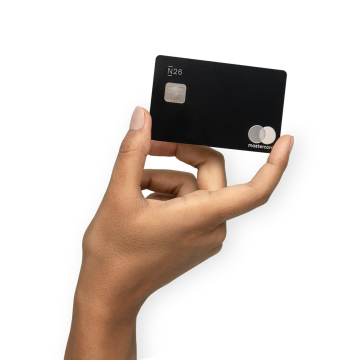
N26 debit cards—find the right card for you
All N26 bank accounts come with a virtual N26 debit Mastercard, which you can link to Apple Pay or Google Pay. Make free payments in any currency, withdraw cash for free, and enjoy full security protection on every card purchase. N26 Standard account holders can get a debit card paired with their N26 account against a one-off fee covering the delivery. N26 Smart and N26 Go customers can choose from one of five card colors. Or opt for a sleek, stainless steel card with N26 Metal.
Find the plan

Find a plan for you
N26 Standard
The free* online bank account
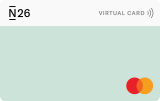
Virtual Card
€ 0,00/month
A virtual debit card
Free payments worldwide
Deposit protection
POPULAR
N26 Go
The debit card for everyday and travel
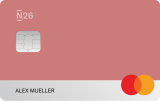
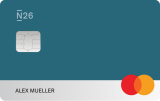
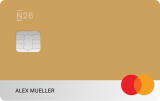
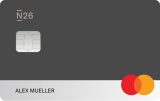
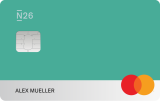
€ 9,90/month
Up to 5 free withdrawals in the Eurozone
Flight and luggage delay cover
Medical emergency cover
Winter activities insurance
Pandemic coverage
N26 Metal
The premium account with a metal card

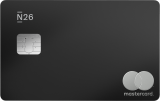
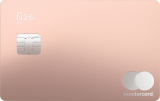
€ 16,90/month
An 18-gram metal card
Up to 8 free withdrawals in the Eurozone
Purchase protection
Phone insurance
Dedicated N26 Metal line
A credit card is a payment card that allows the cardholder to borrow funds from the lender. This line of credit is a loan between the lender and holder, typically paid back monthly.
A debit card is a payment card that acts as a direct link to the cardholder’s bank account. When the cardholder makes a purchase, the money is taken straight out of the cardholder’s current balance.
A pre-paid debit card or top-up card is a payment card that allows the cardholder to top-up a set amount of money onto the card. It is generally not connected to a bank account or line of credit, and thus the cardholder cannot spend beyond the amount of money they’ve topped up onto the card.
All N26 bank cards are debit Mastercard cards with contactless NFC technology. Credit cards are not currently offered.
Once you have successfully completed the N26 account sign-up process, you will immediately have access to your virtual N26 debit Mastercard on your smartphone. Link this to Google Pay or Apple Pay to start spending immediately. If you ordered a physical card or your account includes one automatically, this will typically arrive via post in 5 to 7 business days.